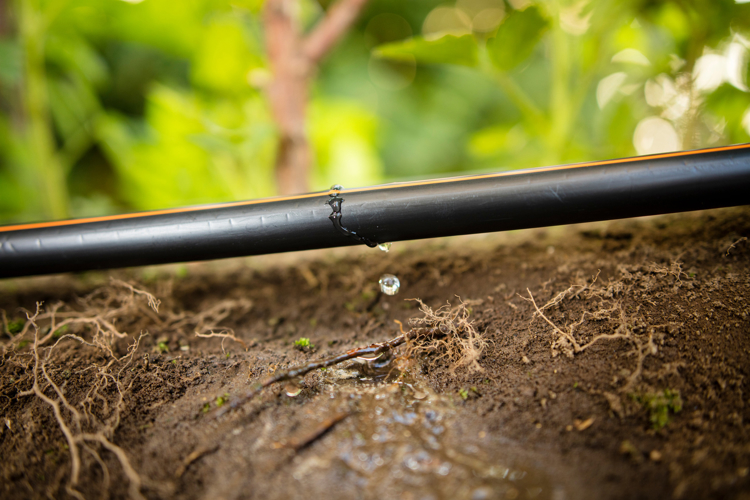Drip irrigation: The water saving wonder that grows more with less
The most astounding discovery with regards to water and plant growth, must be the fact that plants don’t need the massive volume of water we have been pouring over them for decades, centuries. A regular, small amount of water delivered directly to the root zone, is often all it takes.
This is what drip irrigation is all about. It is an ingenious system that has allowed Israel to turn one of the driest countries in the world into a country known for food production and water management. Drip irrigation has been key to the success of the Kibbutz and cleared the way for bringing sustenance and sustainability to a desert landscape.
A peek at the history
Drip irrigation was first discovered in the early 1900s by Simcha Blass in Israel when he noticed that a tree growing near a dripping tap did so much better than the other trees nearby. This sight of tiny drops penetrating the soil causing the growth of a large tree provided the catalyst for Blass's invention, and the dripper line was born. Blass patented the concept in 1960. This design uses friction and water pressure loss to leak drops of water at regular intervals directly to the roots of plants. Over the years the concept has developed rapidly and today we can grow almost any crop in any area under drip irrigation.
How drip irrigation works
A dripperline, linked to an appropriate water source by a main feeder hose, allows a slow and steady flow of water along its tubing that can be precisely and economically controlled. Along the dripperline are emitters, tiny nozzles that release a few drops of water directly to the roots of the plants at regular intervals.
These emitters are placed strategically so that the roots benefit directly from the water release with no loss of sustenance. There are many varieties of dripperlines and functions, but essentially reaching the roots with just the right amount of water the plant requires, is always the aim. Through continual innovation, there is now a comprehensive tailoring of systems to suit any plot size, plant and crop type, and choice of application – from large commercial farming to greenhouses, hydroponics, and residential gardens.
The benefits of drip irrigation
- Significant water savings
- Valuable reduction in the need for fertilizer and energy.
- Significant improvement in crop quality and yield.
- Less wastage in water run-off and loss of topsoil.
- Rapid return on investment.
- Notably reduced loss of nutrients through leaching.
- The contamination of soil and groundwater is minimised.
- Results in less soil compaction and better root performance.
- Reduction in weeds, and therefore less need for herbicides.
- Farmers (and gardeners) are no longer dependent on the weather regarding timing and quantities.
Making fertilizer go further
Drip irrigation not only allows you to accurately deliver water to plants. It also allows precise delivery of nutrients. Precision nutrigation is based on high accuracy dosing channels that not only carry and direct already dissolved nutrients straight to active root zones, thus ensuring immediate uptake, but also ensure uniform and continuous distribution of nutrients.
Benefits of nutrigation include:
- Quick action dosing valves prevents wastage
- Providing optimal nutrition according to individual plant needs
- Ensuring nutrition at precise compositions and rates
- Maximising nutrient efficiency, with minimum losses
- Fertigation controllers are easy to install, manage and maintain
- Allows EC & pH measurement and control.
At Netafim we help our customers produce higher yields and better-quality crops with fewer resources. We offer a wide range of state-of-the-art irrigation solutions and complementary for agriculture, landscaping and mining. From drippers and dripperlines, through sprinklers and micro-emitters, to digital farming solutions and greenhouse systems, Netafim's market-leading products and services enable cost-effective irrigation for optimal and sustainable results.

Share your thoughts
Comments
We'd love to hear your thoughts! To enter a comment, type your name and email address.